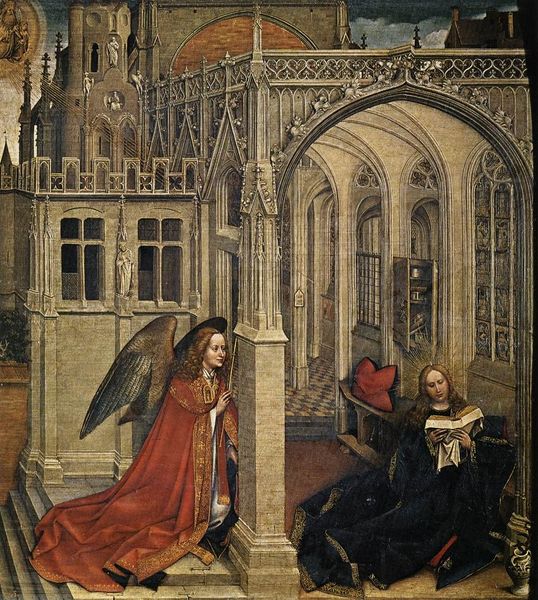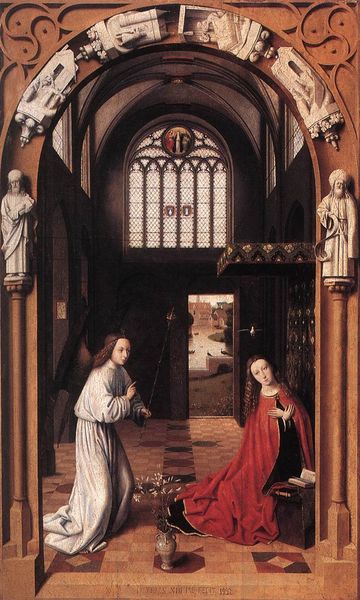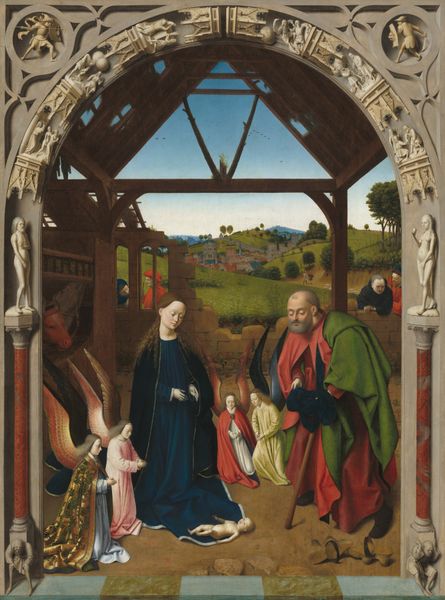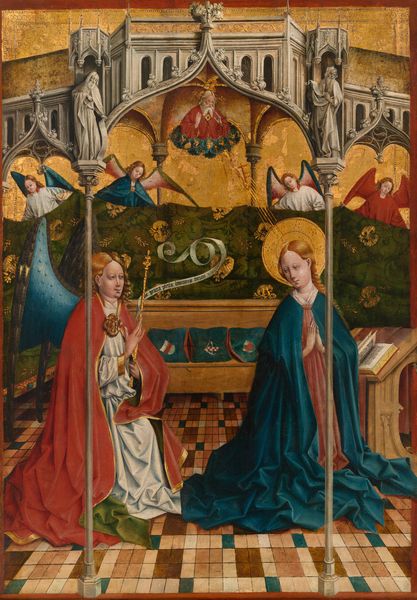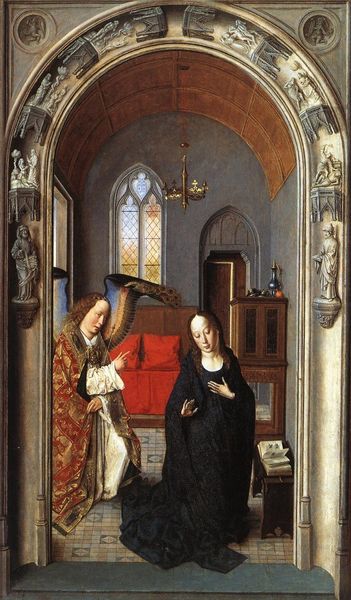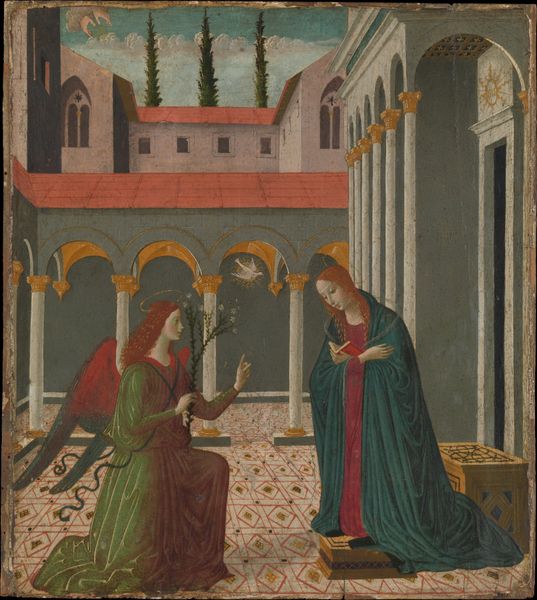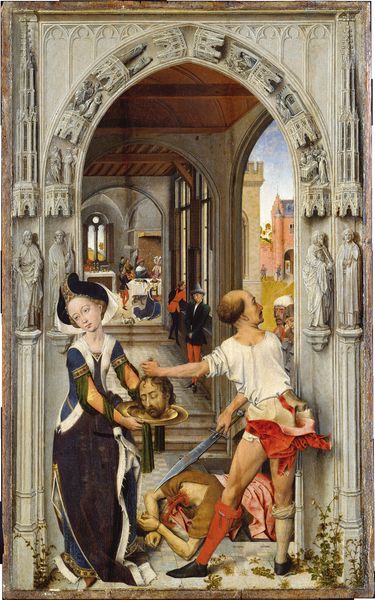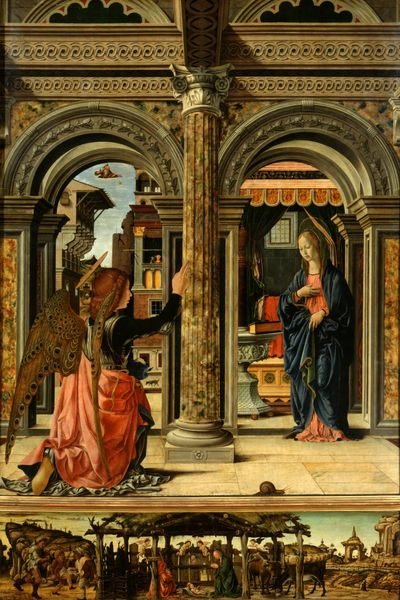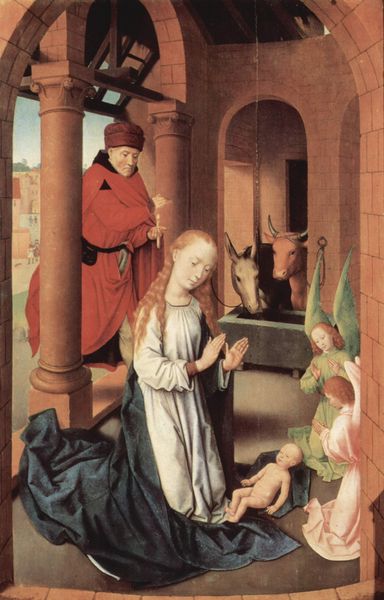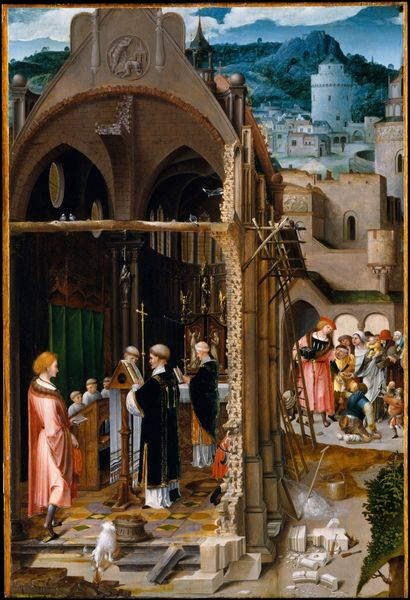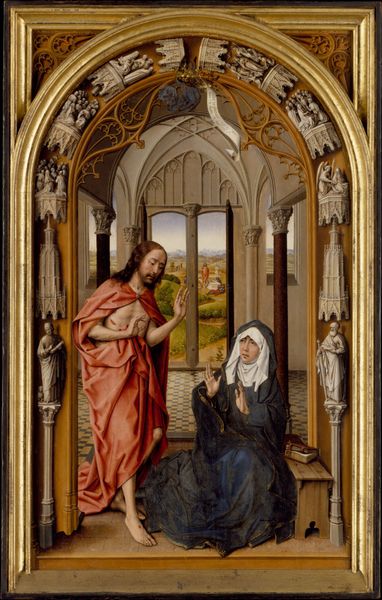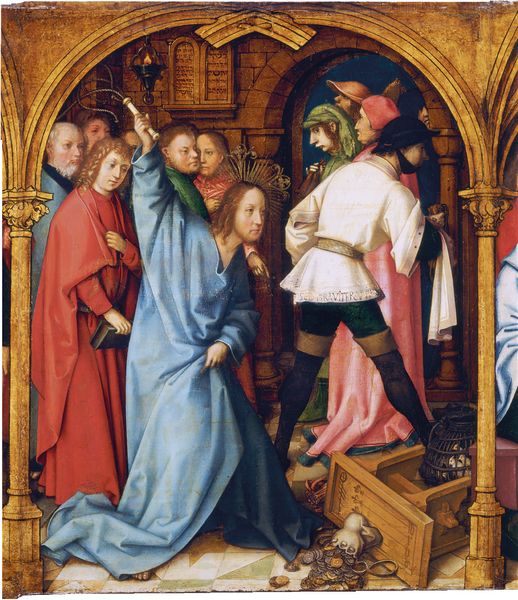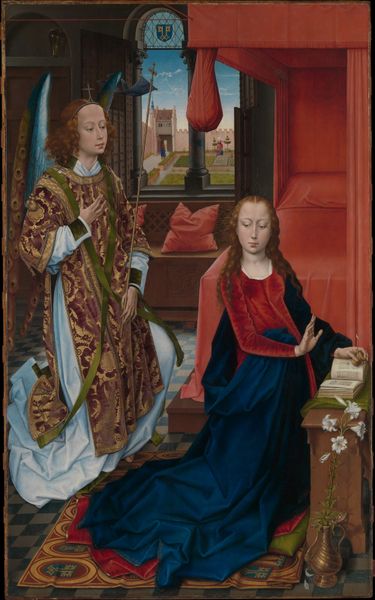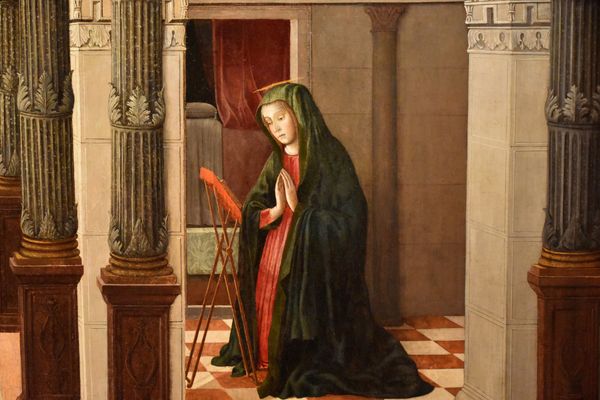
painting, oil-paint, impasto
#
portrait
#
medieval
#
painting
#
oil-paint
#
oil painting
#
impasto
#
flemish
#
history-painting
#
northern-renaissance
#
portrait art
#
virgin-mary
#
fine art portrait
#
angel
Dimensions: Overall 31 x 25 7/8 in. (78.7 x 65.7 cm); painted surface 30 1/2 x 25 1/4 in. (77.5 x 64.1 cm)
Copyright: Public Domain
Editor: We’re looking at “The Annunciation” by Petrus Christus, made sometime between 1445 and 1455. It’s an oil painting and, wow, the detail is just incredible. There’s such a quiet stillness about it, yet so much is happening. I'm curious, how would you interpret this work within its historical context? Curator: Well, let’s consider the social function of art at that time. Christus was working during a period when art served primarily as a tool for religious instruction and devotion, as well as wealthy patronage. This piece would have likely been commissioned for private devotion or possibly displayed in a chapel. Notice the artist renders the Virgin in domestic context, and includes donor portraiture; how does the combination of these reflect the status of the commissioner? Editor: That's interesting. I see the lilies which I understand are symbolic, but I didn't catch the domestic setting. Are there any visual cues in this painting that signal its role beyond just depicting a biblical scene? Curator: Absolutely. The meticulously rendered textures, like the angel's brocade and Mary’s deep blue robe, weren't just demonstrations of skill. The incorporation of Latin inscriptions might suggest it’s designed for a viewer with a high level of theological knowledge, therefore intended to impress. The intense level of realism, which would’ve amazed contemporary audiences, reflects the power of wealthy commissions that elevated both the artist and the patron. Editor: So the very act of creating something so detailed and realistic speaks to a certain societal power dynamic. I hadn't thought about it that way before. Curator: Precisely. It's about understanding art not just as aesthetic achievement, but as an object deeply embedded in a specific social and political fabric. I would be curious to delve into Petrus Christus as a political and economic operator as it may impact interpretation further. Editor: That gives me a whole new perspective on Early Netherlandish painting. Thanks for that! Curator: My pleasure. Examining art through this lens offers richer understanding of history.
Comments
No comments
Be the first to comment and join the conversation on the ultimate creative platform.
